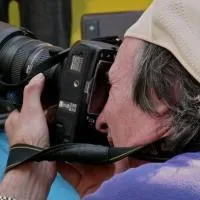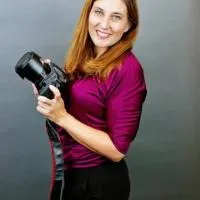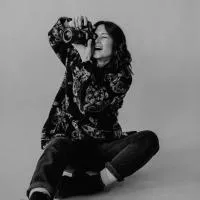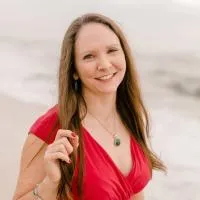If you don’t know what the SEO title and meta description are, go ahead and read points #17 and #18 from my SEO guide for photographers.
In short, they are text values (you can customize) which don’t show up on the site but which end up in search results:

What you usually learn is to do keyword research and then “craft” the SEO titles and meta-descriptions to include your target keywords/phrases as much as possible.
Let me introduce you to the concept of “click-through rate”
In technical terms, it’s the percentage of search engine users that click on your site’s link after seeing it in search results.
In plain English: how appealing your SEO title and meta-description are to users.

Too many photographers are over-doing SEO, only thinking about “tricking” Google into ranking high for certain words.
Instead, you should focus a lot more on humans and how they understand your SEO tags when seeing them in search results. That’s why “fake” keyword-rich phrases perform badly these days.
So, how do you write the SEO fields?
If you hate SEO (because you’d rather be shooting pictures) and you’re overwhelmed by “keyword research”, you’ll definitely find some comfort in this simpler approach:
Write your SEO titles & meta-descriptions as if you were describing the website to an acquaintance over dinner (using natural language).
Why “dinner” in particular you ask? Because after enjoying a glass of wine, you loosen up and speak more naturally, instead of being over-anxious to describe all the details of your site :-)
Let’s take the meta-description for example. After finishing the main dinner course and enjoying your glass of wine, you wouldn’t be telling your friend that your website is about:
“Your stock photography source for Austin, Texas Lifestyle, Skyline, People, Family, Travel, Sports, Business & Landscape stock images.”
That sounds a little fake when spoken out loud, the enumeration of the keywords is too long. Also notice how “stock” is placed there twice in an effort to rank higher for it.
Instead you’d naturally tell the person that the site is about this:
“Professional stock photography agency based in Austin, Texas, providing a wide range of stock images for commercial and editorial use.”
This way, you still repeat the word “stock”, but it all sounds more natural.
So the goal is to make your website look appealing in search results. You won’t do that by cramming comma-separated keywords in there in a desperate attempt to rank higher, it will instead have the opposite effect and Google will take notice.
Here are some more examples of naturally-sounding SEO meta-descriptions as seen in Google search results (I’ve anonymized them):
“African landscape and wildlife photography by award-winning Botswana based nature photographer Jane Doe.”
“ProfessionalNYC based photography agency specialized in babies, children, teens and school photography.”
“Jane Doe Images is a sports photo agency, providing top quality, striking images with impact from the world of rugby union & other sports.”
“We love making imaginative photos of individuals, couples, families and weddings. We’re based in the beautiful, leafy suburb of Croydon, Melbourne.”
“New Jersey advertising photographer specialized in creating inspired imagery for commercial and editorial photography clients.”
“Jane Doe is an international award-winning photographer from Brisbane, specializing in location shoots for commercial and editorial clients across southeast Queensland.”
Notice how they can all be spoken out loud and still sound natural.
Back to the dinner party metaphor: don’t assume your friend knows too much about you or your site. If it helps, imagine they’re a complete stranger. When describing your page, you’d then make sure you include all the important and relevant things (like your location and your main specialties, awards, featured publications, etc.)
So try to describe your site out loud, using natural language. Then write it all on a piece of paper and then edit it down till you can extract the SEO title and meta-description from it.
FAQs
Is it true that I need to include the most important keywords at the beginning of the SEO title & meta-description?
Technically, yes, but you’re over-thinking SEO again. Try to keep it simple.
How long should the SEO title and meta-description be?
Title < 50-55 characters (including spaces).
Meta-description < 150-160 characters (including spaces)
Test them out here and make sure they don’t get truncated with an ellipsis.
How can I know what my site’s click-through rates are?
To test things out, you can measure you click-through rates in Google Search Console (formerly called Google Webmaster Tools).
You need to go to: Status > Performance and then enable “CTR”, here’s how it looks like:

You can even filter by “Pages” and that will allow you to compare the different click-through rates for your most popular pages. If you spot one that’s performing bad (like page3 in the example below), you know you need to improve its SEO title and meta-description:

SEO is an overwhelming topic, so I’m regularly trying to break it down into edible pieces. Hope this article has given you a little more clarity.













